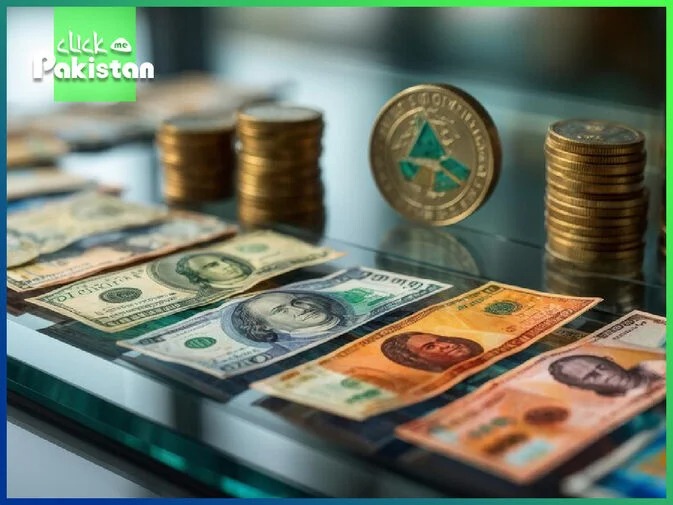One fundamental force that heavily influences Pakistan economy is Monetary policy. It encompasses the policies and measures implemented by the State Bank of Pakistan (SBP) with regard to restriction of inflation rates, regulation of money supply of the country, and direction of interest rates. All these activities determine all growth, support the stability of the economy and the overall condition of the country’s finances for future development.
The Role of The State Bank of Pakistan
The State Bank of Pakistan has a significant influence on how the economy develops because to a number of instruments it uses, including reserve requirements, open market operations, and interest rates.The central monetary authority of the country The State Bank of Pakistan (SBP) is responsible for the formulation of the monetary policy of the country. There are three main objectives, these include the stabilization of the currency, moderation of inflation and provision of economic growth.
Interest Rates:
The SBP utilises the change in the policy interest rate commonly referred to as the discount rate as one of its tools. By changing this rate the SBP impacts the cost of borrowing for consumers and businesses. More often, low interest rates have the effect of encouraging capital expenditure and this leads to growth of the economy.
Open Market Operations:
The SBP directly buys or sells government securities in the open market as a part of open market operations. It affects the total number of dollars available in circulation in the course of conducting economic activities. The buying of securities places money into the financial system, while the selling of securities drains excess money from the financial system and in the process influence the interest rates and the liquidity.
Reserve Requirements:
The maximum percent of loans that can be provided by the commercial banks can also be altered by the SBP. One way through which the central bank can control the amount of money for lending is to change the proportion of deposits that the banks are supposed to keep in their reserves.
Pakistan’s Monetary Policy’s Historical Context
Pakistan’s monetary policy has changed dramatically since 1947, when the nation gained its independence. At first, keeping inflation under control and the currency stable were the main priorities. However, the framework for monetary policy likewise advanced in sophistication as the economy evolved and became more complicated. As time went on, the SBP took a more aggressive stance, placing a greater emphasis on economic expansion and inflation management. The 1990s saw the implementation of market-oriented reforms, which signaled a dramatic change in direction toward a framework for monetary policy that was more transparent and flexible.Pakistan has had a number of economic difficulties recently, such as rising inflation, budget deficits, and external debt. The SBP has implemented a number of monetary policy measures to stabilize the economy in response to these problems. For instance, the SBP has imposed stricter monetary policies by raising interest rates and lowering the money supply during times of high inflation.
Present Monetary Policy’s Structure
The current framework of monetary policy in Pakistan aims to maintain price stability and stimulate economic growth. Maintaining inflation within a predefined range and fostering an environment that encourages investment and economic expansion are the primary goals of the SBP.
Currency Rate Management:
One of the most important aspects of Pakistan’s monetary policy is managing the exchange rate. The State Bank of Pakistan (SBP) intervenes in the foreign exchange market to maintain the stability of the Pakistani Rupee (PKR) and prevent unjustified volatility. A stable currency rate promotes trade and investment and boosts investor confidence.
Monetary Policy Committee:
A crucial organization for formulating and implementing monetary policy is the State Bank of Pakistan’s (SBP) Monetary Policy Committee (MPC). The MPC meets often to discuss policy decisions, including interest rate changes and other measures, and to evaluate the status of the economy.
Conclusion
The future of monetary policy in Pakistan depend on its capacity. It depends between short-term stability and long-term development objectives as it pursues its economic course. A key component of monetary policy has a big impact on inflation, financial stability and economic growth. Monetary policy continue to promote economic development and stability. It need effective policy coordination, response to changes in the domestic and international economy, and an emphasis on financial inclusion.
FAQs
What is the main goal of monetary policy in Pakistan?
The main goal of monetary policy is to maintain price stability via managing inflation, promoting economic expansion, and guaranteeing financial stability.
Who is in charge of out monetary policy?
Implementing monetary policy is the responsibility of the State Bank of Pakistan (SBP). It controls the money supply and affects the state of the economy through a variety of mechanisms, including interest rates and open market activities.
How is inflation managed by the SBP?
The main way that the SBP manages inflation is via changing interest rates. The central bank may decrease borrowing and expenditure by raising interest rates, which contributes to a decrease in inflation.
Read Also For More: An All-Inclusive Guide to 1 Unit Price in Pakistan









